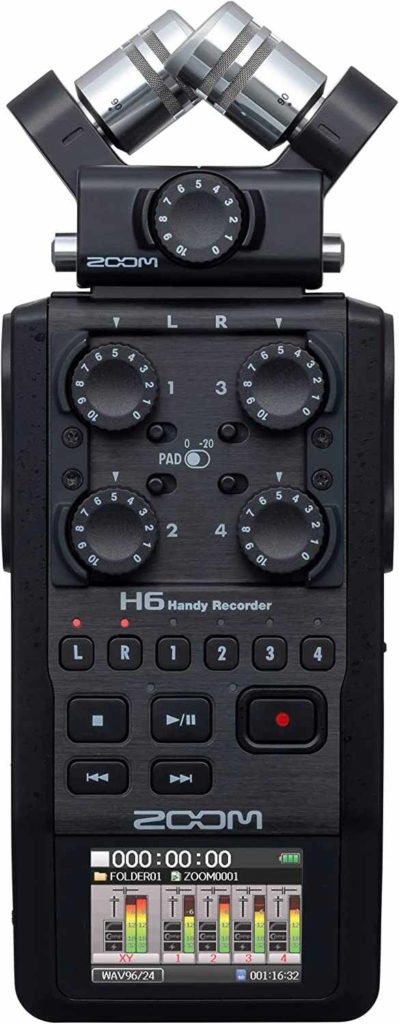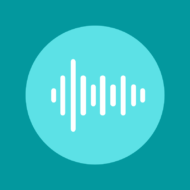
Best Portable Audio Recorder (That won’t break the bank)
- Best Portable Audio Recorder (That won't break the bank)
- Our Top Pick
- Cream of the Crop Portable Recorder
- Most Compact Portable Audio Recorder
- Other Noteworthy Portable Audio Recorders
- Best Portable Audio Recorder for Guitarists and Podcasters
- Video Reviews
- Audio Recorders Considered + Mic Configurations
- XY vs AB vs ORTF Mic Techniques
- Conclusion / What I Bought
- Other Resources
Our Top Pick

Tascam DR-100 MkIII (~$300)
Pros
- Great for recording quiet nature or ambient sounds: One of the quietest self-noise recorders on the market, at -126 dBU. Second only to the Sony D100 (-127 dBU)
- Quick startup time: Significantly faster than the Zoom H4n
- Excellent for external mics (XLR inputs)
- Excellent build quality (built like tanks)
- “Tascam DR-100 mkiii is my recommendation, if you can find one.“
- “Unlike the H2n, this recorder does have XLR inputs and 48v phantom power, which means you can plug in a variety of pro microphones as you expand your kit.“
- Can get for about $250 – $300 used on eBay. $330 new
- Best “Bang for the Buck”: For the price, the best audio recorder you can find
Cons
- The lithium-ion battery is built in, so I don’t think you can replace it, like in the MkII. Perhaps an MkII is almost as good as the MkIII? So more points of failure on the MkIII… though to be fair the lithium-ion batteries will probably last for many years (7? 10?) before having to send it in to Tascam to be replaced
- You can’t really hold it and record, as the buttons rattle around. The MkII doesn’t have this problem, with much sturdier buttons / controls
- More menu-driven, vs the MkII
Conclusion
- It’s amazing piece of kit, and people online love this thing. I would say if you don’t want to shell out $1000 for the best of the best recorder (Sony PCM-D100), this is the next best thing. (Personally it’s what I got for myself)
Click here to get your Tascam DR-100 MkIII!
Cream of the Crop Portable Recorder

Sony PCM-D100 ($1000)
Pros
- Best option for recording quiet ambience sounds. Lowest noise floor of all portable recorders
- People are saying this is the cream of the crop in portable sound recorders. Because it has the lowest noise floor, at -127dBu (it introduced the least amount of noise)
- It is commonly used to record nature sounds, due to the low amount of noise it produced. People online love this thing, and it’s legendary within the field recording community
- However… this model has been discontinued in 2021, by Sony
- They say the next quietest recorder is the Tascam DR-100 mkiii, which has a noise floor of -126 dBu. It is also much more affordable
- You can still find the D100 used, some new in box, though they are getting pricier as time goes by. Used units on eBay are currently around $1000
- Other good Sony field recorders to consider are the D50 (-126 dBu) and M10 (-119 dBu), however these have also been discontinued so you’ll have to look for a used one
- There’s actually a great article by AcousticNature.com on the PCM D100 being discontinued and documenting how Field Recorders are actually getting worse
- If you can get your hand on one of these… you’re set. This is an amazing piece of kit, based on reviews
Cons
- Expensive
- Doesn’t support XLR microphones
Click here to get your Sony PCM-D100!
Most Compact Portable Audio Recorder
Sony PCM-A10
- People online also love and swear by this recorder, and it’s compact form makes it a lot easier to carry around. The more likely you are to carry your recorder, the more likely to record sounds!
- I can see how having a bulky recorder would make carrying it around a pain, and I’d be more prone to leaving it at home
- Widely regarded as the best “bang for the buck” portable recorder, even though on paper it doesn’t have the best specs
- Almost as good sound quality as the (much more expensive) Sony PCM-D100
Click here to get your Sony PCM-A10!
Other Noteworthy Portable Audio Recorders

Tascam DR-100 MkII (~$100-$150)
- Noise floor of about -95 dBu, at 16 bit, a bit high. But still performs remarkably well compared to the Zoom H4n, for example
- Not true 24 bit, it’s actually 16 bit
- $100-$150 used on eBay
Click here to get your Tascam DR-100 MkII!

Tascam DR-40X
Pros
- Good at handling line-level signals. (Balanced inputs). This is good for recording from a sound board at a wedding, for example
- Handles microphones used in video very well (shotgun, wireless, lavalier, small diaphragm condensers), and large-diaphragm condenser microphones used in music production
- Built in tone-generator, making it a good audio recorder for video shoots, which helps you sync sound to video, along with some other cool features
- Quick boot times
- Unlike many other great recorders on here (which are discontinued), these are still in production!
Cons
- Doesn’t handle dynamic microphones really well (such as a Shure SM57 or SM58)
- Almost entirely plastic, housing feels kind of cheap (compared to Zoom H4n)
Click here to get your Tascam DR-40X!
Best Portable Audio Recorder for Guitarists and Podcasters

Zoom H4n Pro
Pros
- Guitar friendly: Over 50 built in effects presets. Since the mic inputs work well with guitars, there are a bunch of guitar presents
- Works well with dynamic microphones, so a good choice for musicians and podcasters, as they use those type of microphones often (eg. Shure SM57 or SM58)
- 4 Tracks: Record up to 4 sound sources simultaneously
- Still in production
Cons
- 1/4″ inputs are high-impedance, so it’s good for guitars, but not so much for other inputs
- Slower boot time (compared to Tascam DR-40X)
- More of a entry level recorder, at around $200. For more professional recordings, many online state the H4n doesn’t cut it. (Preamp noise in quiet environments, poor metering, and gain level adjustment is finicky). A better option in the same price range would be the Roland R26
Conclusion
- A good entry level recorder, even though some gripe about it, many others seem to find it works just fine. If you’re starting out, it’s not a bad choice.
Click here to get your Zoom H4n Pro!

Zoom H6
Pros
- 4 XLR/TRS Inputs
- Not cream of the crop, but good enough sound quality to get the job done, without breaking the bank
- Standard issue for BBC radio and news teams
- Very versatile for a small device (practical shape / handy)
- Good bang for the buck
- Phantom power on all inputs
- Expandable up to 6 inputs
- Long battery life
Cons
- Unit distorts sound easily (sharp transients)
- Audio distorts as battery life dies down
- Knobs are too easily moved by accident
- Not enough gain for recording quiet sound sources / ambience
- Very susceptible to wind and handling (hand) noise
Click here to get your Zoom H6!
Video Reviews
Audio Recorder Epic Comparison
Tascam Dr-40x Portable Digital Recorder : ASMR : AB vs XY : Sound Test : Tutorial
Tascam DR-100 MkIII Audio Recorder – The Good And Bad
Tascam DR 100 Mark III Review Plus Tutorial and Full Manual
Tascam DR-40X vs DR-100 mkiii – Acoustic Guitar Comparison
Audio Recorders Considered + Mic Configurations
Tascam DR-40X – XY, AB, and ORTF
Tascam DR-100 MkIII – AB and ORTF
Marantz – Supposedly an industry standard
Zoom H4n Pro – XY (90 degree and 120 degree)
Zoom H6
XY vs AB vs ORTF Mic Techniques
An important thing to note is that different recorders will be able to record with different mic techniques. Some will able to do all 3, some only 1.
This is why the best recorder for you will depend on what exactly you want to be recording. Let’s take a look at the description of some of the mic techniques and what they’re used for:
- XY: Good for close-mic applications, provides a clear sound that can bring an individual instrument to life. Translates to Mono better Cons: Won’t provide much of a stereo image. If you have more instruments, or want a wider sound, consider AB or ORTF
- ORTF: Good for ambient sounds, such as a passing car, or recording a band (or other noise source), as a whole. Cons: Not ideal for individual instruments, up close. Prone to phasing issues.
- Comparison of XY vs ORTF on a Tascam DR-40x
- If you’re a singer/songwriter like me, and are going to be recording just your guitar, voice, or a combination of the two… you might want a recorder that can record in XY (mics pointed inwards towards each other). This is because it’ll focus the field of recording onto a smaller area (you and/or the guitar) and give a much livelier result
Conclusion / What I Bought
Got my hands on a good condition, used Tascam DR-100 MkIII.

